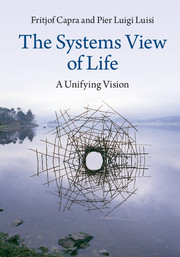Book contents
- Frontmatter
- Dedication
- Contents
- Preface
- Acknowledgments
- Introduction Paradigms in science and society
- I The mechanistic worldview
- 1 The Newtonian world-machine
- 2 The mechanistic view of life
- 3 Mechanistic social thought
- II The rise of systems thinking
- III A new conception of life
- IV Sustaining the web of life
- Bibliography
- Index
2 - The mechanistic view of life
from I - The mechanistic worldview
Published online by Cambridge University Press: 05 April 2014
- Frontmatter
- Dedication
- Contents
- Preface
- Acknowledgments
- Introduction Paradigms in science and society
- I The mechanistic worldview
- 1 The Newtonian world-machine
- 2 The mechanistic view of life
- 3 Mechanistic social thought
- II The rise of systems thinking
- III A new conception of life
- IV Sustaining the web of life
- Bibliography
- Index
Summary
Descartes’ uncompromising image of living organisms as mechanical systems established a clear conceptual framework for future research in biology, but he himself did not spend much time on physiological observations, leaving it to his followers to work out the details of the mechanistic view of life.
A comment on terminology is perhaps in order here. In this book we use the terms “Cartesian,” “mechanistic,” and “reductionist” interchangeably. All three terms refer to the scientific paradigm formulated by René Descartes in the seventeenth century (see Section 1.1.3), in which the material universe is seen as a machine and nothing but a machine.
In Descartes’ mechanistic conception of the world, all of nature works according to mechanical laws, and everything in the material world can be explained in terms of the arrangement and movements of its parts. This implies that one should be able to understand all aspects of complex structures – plants, animals, or the human body – by reducing them to their smallest constituent parts. This philosophical position is known as Cartesian reductionism.
The fallacy of the reductionist view lies in the fact that, while there is nothing wrong in saying that the structures of all living organisms are composed of smaller parts, and ultimately of molecules, this does not imply that their properties can be explained in terms of molecules alone.
- Type
- Chapter
- Information
- The Systems View of LifeA Unifying Vision, pp. 35 - 44Publisher: Cambridge University PressPrint publication year: 2014



